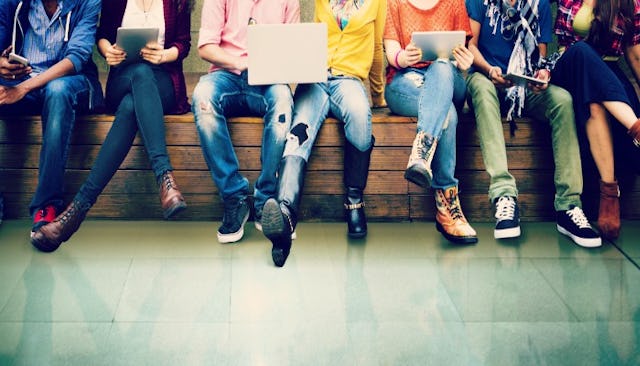The Upside Of Peer Pressure

Anyone who’s ever been or known a teenager knows they engage in risky behavior. Parents of teens lie awake at night wondering if the car their kid is driving is safe enough or if their companions will egg them on to run red lights, or, God forbid, drink before getting behind the wheel. We’re all aware of peer pressure and the possibility that our kids will feel nudged or pushed towards irresponsible and dangerous behavior.
Science confirms our fears. In 2005, Temple University psychologists Laurence Steinberg and Margo Gardner conducted a study on teens and risky behavior, specifically when driving. They found that kids are more likely (twice as likely, for younger teens) to speed through yellow lights and to otherwise drive recklessly when they are being observed by same-age kids. (Being observed had no effect on how adults drove.)
In 2011, Steinberg and his colleagues then used functional MRIs on teens while they played a video driving game and found that teens taking risks in the presence of peers have greater activity in the regions of the brain associated with rewards than adults do. The thrill of making a daring maneuver in a car when a friend is onboard feels more exciting to teens than it does to adults—which is why kids take the chances in the first place. Annie Murphy Paul, reporting for Scientific American, writes, “[R]ewards are more intense for teens when they are with peers, which motivates them to pursue higher-risk experiences that might bring a big payoff (such as the thrill of just making the light before it turns red).” Peer pressure, for teens, does have a real, measurable, negative effect.
But recent research shows that peer pressure may have a positive effect, too.
Paul reports on Steinberg’s latest work: He and his colleagues recently constructed an experiment in which 101 teenage boys played a computer card game called the Iowa Gambling Task. In this game, players have to gather and assess information—they’re told that there are four decks, some “good” and some “bad,” but not told which are which. The computer reveals cards one by one and players decide whether to play them or pass. As the game goes on, players gradually determine which cards will lead to gains and which will lead to losses. Some boys played alone, and some played under the gaze of three peers.
Paul writes: “The results: Teens who played the Iowa Gambling Task under the eyes of fellow adolescents engaged in more exploratory behavior, learned faster from both positive and negative outcomes, and achieved better performance on the task than those who played in solitude. ‘What our study suggests is that teenagers learn more quickly and more effectively when their peers are present than when they’re on their own,’ Steinberg says.”
Other research supports the idea that social pressure, or even social information, helps us learn: A 2004 study divided students into two groups. Both groups were given descriptions of people, but one group was told they were forming an impression of the person described (a social context), while the other group was told to remember the order of the description’s details (a simple cognitive task). The result? Adding the social context to the task meant better recall.
Teens are, as Paul puts it, “hyperattentive to social minutiae: who is in, who is out, who likes whom, who is mad at whom.” They are in a uniquely learning-rich stage of life—if we can figure out how to harness this attention to social minutiae. She references the 2013 book Social: Why Our Brains Are Wired to Connect, by Matthew D. Lieberman, a social cognitive neuroscientist at UCLA, who lays out several possibilities for getting otherwise dry information to stick: teaching history with a greater emphasis on personality, psychology and social relationships, for example. Or, students could tutor other students in subjects such as math, introducing a social element that reinforces their own learning.
Our current high school model discourages risk-taking—kids go for the class with an easy teacher, because the A in the transcript is worth more in the college applications process than a C is in a tough class. But if we could leverage teens’ risk tolerance in social situations in a learning environment, kids might actually get a better education.
In any case, it sounds like small tweaks, like peer tutoring, could have big payoffs—a low-risk proposition.
This article was originally published on